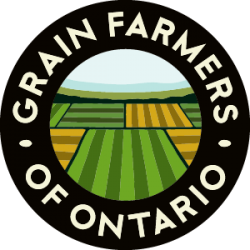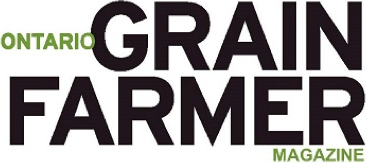Mitigating mycotoxins in the Canadian food value chain
Principal Investigator: Art W. Schaafsma and Victor Limay Rios
Research Institution: University of Guelph
Timeline: March 2016 – December 2019
Objectives:
- Develop rapid reliable method for testing deoxynivalenol (DON) and Ochratoxin A (OTA) at grain elevator using aspirated dust.
- Best management practices and surveillance for OTA in post farm grain storage.
- Measuring progress in mitigating DON in wheat by comparing similar epidemics approximately 20 years apart.
Impacts:
- The development of an information resource for grain farmers to build awareness of Ochratoxin A (OTA) and how it can be managed will allow for a proactive response to detection of OTA and prevent contamination of grain-based foods.
- The development of a cost effective and non-destructive sampling of OTA and DON in grain loads using aspirated dust has the potential to prevent contaminated grain from entering the value chain.
Scientific Summary:
Mycotoxins in whole grains are very difficult to monitor when grain enters the value chain after leaving the farm. Most of the Best Management Practices (BMPs) for mycotoxins must be employed during grain production and on-farm storage and the grain industry has struggled with how to sample and detect mycotoxins in a cost effective, efficient and reliable manner after grain leaves the farm. Currently, DON, the most economically important toxin, is managed in small grains using the Fusarium-damaged kernels (FDK) method. The relationship between FDK and DON is inconsistent by year and across grain market classes and tends to work better when handling very large grain lots. There is resistance to sampling grain and testing for DON at elevators because of the cost, logistics and sampling uncertainty. Other mycotoxins such as OTA, present an even greater challenge for grain sampling and testing. This is due to their greater heterogeneous distribution in grain lots and the lower EU regulations. If OTA in whole grain could be monitored during grain transfer by using dust as a surrogate, most of the serious mycotoxins could be detected at the source, making management much simpler further up the chain. Perhaps this could lead to an option for Identity Preserved load certification.
This project aimed to develop a reliable protocol for testing DON and OTA during on-farm loading and extending lessons learned up the value-chain to manage contamination.
This project also sought to develop and disseminate extension material on BMPs to manage OTA in grain handling and storage based on the knowledge the researchers derived from their recently completed on-farm study. By creating awareness with various industry sectors they aimed to solicit self-directed monitoring, sampling and identification of possible control points to avoid OTA formation in the grain handling and storage process.
Lastly, comparing 1996, the year in which there was virtually 100% crop failure in the great lakes region for soft winter wheat, with 2013 and 2015 which had virtually identical growing conditions, the project determined the relative benefits of advances in genetic developments in seed and farming practices including forecasting and fungicide application.
Objective 1: Developing rapid reliable method for testing DON and OTA at grain elevator using aspirated dust.
A total of 323 paired grain and grain dust samples (particle size <1650 μm) were collected from combines at harvest (56%), on-farm bins (28%), and experimental minibins seeded with ochratoxin A (OTA)/Penicillium verrucosum hot spots (15%) of which >98% were soft red winter wheat. Liquid chromatography-tandem mass spectrometry (LC-MS/MS) was used to detect 21 mycotoxins, including deoxynivalenol (DON) and its plant-conjugated form, deoxynivalenol 3-β-d-glucoside (DON 3-Glc). Except for DON 3-Glc, all mycotoxin concentrations found in grain dust were higher than in grain (p < 0.0030). Pearson correlation coefficients and two-variable regression show a significant (p < 0.0001) linear relationship between the mycotoxin content in grain and that in grain dust with 19 toxins. In DON and OTA, more than 82% of the variation in the data is explained by the two-variable regression model. Because of its higher mean concentration and detection frequency, only DON produced a strong relationship (p < 0.0001, r2 = 0.949) with low root-mean-square error (RMSE) (293.41 ng/g). The results suggest that modeling levels in grain based upon levels in grain dust can be used to estimate DON in grain bulk.
Objective 2: Best management practices and surveillance for OTA in post farm grain storage.
Ochratoxin-contaminated grain can lead to down-grading or rejection from the buyer at significant cost to the farmer. Based on the results of this project, a guide has been published on-line, for farmers with on-farm storage bins for small grains such as wheat, oats and barley. The bulletin outlines why preventing ochratoxin from developing is important and steps to take to prevent its production in their on-farm storage bins.
You can find the bulletin here.
Objective 3: Measuring progress in mitigating DON in wheat by comparing similar epidemics approximately 20 years apart.
Fusarium head blight (FHB) in wheat causes yield loss, quality reduction, and mycotoxin contamination in temperate wheat production areas worldwide. The modern management strategy of using moderately resistant cultivars, a fungicide applied at flowering, and a high rate of N fertilizer reduced total deoxynivalenol by 67%, reduced Fusarium-damaged kernels by 49%, reduced FHB index by 86%, increased grain test weight by 11%, and increased grain yield by 31% compared with the standard management practice of seeding highly susceptible cultivars with no fungicide and a lower rate of N fertilizer recommended in the 1996 era. This study enabled a published economic assessment of the return on investment for the improvements in cultivars, fungicide, and N fertilizer applications since 1996.
External Funding Partners:
University of Guelph
Pepsico Foods
Mondelēz
Kellogg
Prairie Oat Growers Association
Nestlé
Canadian National Millers Association
Western Grains Research Foundation
Food & Consumer Products Canada
This project was funded in part by the Government of Canada Agriculture and Agri-Food Canada, through Growing Forward 2’sAgriInnovation Program (AIP) – Industry-led Research and Development Stream.
Project Related Publications:
Objective 1:
Limay-Rios, V., & Schaafsma, A. W. (2021). Relationship between Mycotoxin Content in Winter Wheat Grain and Aspirated Dust Collected during Harvest and after Storage. ACS Omega, 6(3), 1857-1871.
Objective 2:
Limay-Rios, V., Miller, J. D., & Schaafsma, A. W. (2017). Occurrence of Penicillium verrucosum, ochratoxin A, ochratoxin B and citrinin in on-farm stored winter wheat from the Canadian Great Lakes Region. PLOS ONE, 12(7), e0181239.
Limay-Rios, V., Miller, J. D., & Schaafsma, A. W. (2018). Preventing Contaminated Grain – Ochratoxin A.
Objective 3:
Xia, R., Schaafsma, A. W., Wu, F., & Hooker, D. C. (2020). The Change in Winter Wheat Response to Deoxynivalenol and Fusarium Head Blight Through Technological and Agronomic Progress. Plant Disease, 0(0), PDIS-06-20-1310- RE.

